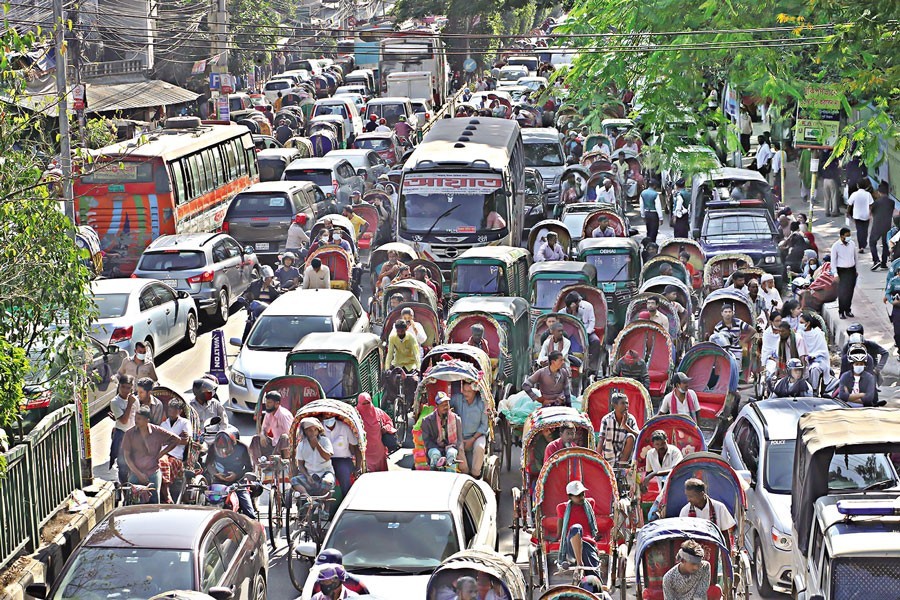Highly Dhaka city-concentrated development and population share cast adverse impact on Bangladesh's gross domestic product (GDP), reducing its growth by 6.0 per cent or more, according to findings revealed Thursday at a BIDS conference.
Such Dhaka-centric growth also lowers growth of other cities and impacts per-capita-income inequality, says a paper presented by Ahmad Ahsan of Policy Research Institute of Bangladesh during the annual BIDS conference on 'Development: Dhaka's Overgrowth is Harming Overall Growth'.
It's also impacting the overall urban development and causing congestion and pollution.
"There are also economic limits to concentration… Cities cannot grow in unlimited way…," he said sharing his paper contents in a second-day session of the conference which he attended virtually.
Former Lead Economist of the World Bank, Mr Ahsan stated the cost of congestion to be 2.0 to 3.0 per cent of GDP as direct effects. The city's growth creates overgrowth of primates, concentrating population and development within a centre of the city.
Overgrowth of primates (the largest city) can undermine the other cities' growth and the cities can overgrow because of market failures arising from lumpy investment-fixed costs and externalities, network effects and circular cumulative causation.
Emphasising corrective policy as political elite prefer growth of primate city, he also said this is not acceptable in growth pole.
Economist Ahsan, also consultant of the United Nations, including the Food and Agriculture Organisation, focused on national, regionally neutral policy and place-based policies, saying that these are integrated issues and must focus on microeconomic management, economic competitiveness, good investment climate, investment infrastructure, connectivity, transport corridors, telecommunications and so.
He said migration, which is highly welfare-enhancing, also has limit even in advanced economies. He shared data of World Development Index that show urban population share of primate city in Bangladesh is 31.9 per cent, which is 3 per cent in China, 6 per cent in India, 7.4 per cent in Indonesia, 22.6 per cent in Pakistan and 23.2 per cent in Vietnam
He cited another paper by Mohammad Yunus, senior research fellow of BIDS, which shows a gap between east and west part of the country in per-capita consumption by estimating income, poverty and inequality in the two regions.
The economist said the disparities could not narrow the gap between cities, adding that poverty is much more acute in the west districts than in east districts. He cited household income and expenditure survey in which west districts appear to experience more convergence of poverty measures than east districts by one per cent whether it is poverty-headcount rate, poverty gap or squared poverty gap.
The HIES estimates partial elasticity between poverty-reduction rate and growth that vary between - 2.23 to -3.6 per cent across headcount rates, poverty gap and squared poverty gap.
During the second-day session, Azreen Karim presented a paper on risk, poverty or politics: The Determinants of Sub-national Public Spending Allocation for Adaptive Disaster Reduction in Bangladesh, followed by Mohammad Abdul Malek on Rural development in Bangladesh Over Three Decades: Findings from Mahabub Hossain Panel Data and the Way Forward.
During the session on the surviving and thriving of women through major shocks, Victoria Baranove, Laura Zimmermann and Shyamal Chowdhury presented papers.


